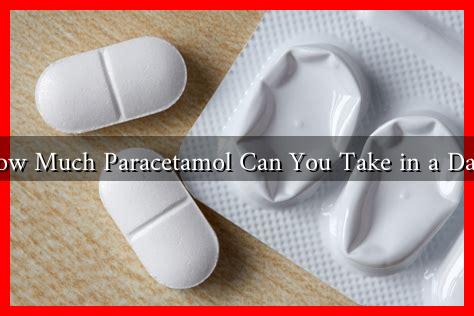-
Table of Contents
How Much Paracetamol Can You Take in a Day?
Paracetamol, also known as acetaminophen, is one of the most commonly used over-the-counter medications for pain relief and fever reduction. While it is generally considered safe when used as directed, understanding the appropriate dosage is crucial to avoid potential health risks. This article will explore the recommended daily limits for paracetamol, factors influencing dosage, and the consequences of exceeding these limits.
Understanding Paracetamol Dosage
The standard dosage of paracetamol varies based on age, weight, and specific health conditions. For adults, the typical maximum daily dose is:
- **4,000 mg** per day for healthy adults.
- **1,000 mg** per dose, taken every 4 to 6 hours as needed.
However, it is essential to note that some health organizations recommend a lower maximum daily dose of **3,000 mg** to minimize the risk of liver damage, especially for those with pre-existing liver conditions or chronic alcohol use.
Factors Influencing Paracetamol Dosage
Several factors can influence how much paracetamol an individual can safely take:
- **Age**: Children require lower doses based on their weight. Pediatric formulations are available, and parents should always consult a healthcare provider for appropriate dosing.
- **Weight**: Heavier individuals may metabolize medications differently, but the standard dosing guidelines generally apply.
- **Liver Health**: Individuals with liver disease or those who consume alcohol regularly should consult a healthcare professional for personalized dosing recommendations.
- **Other Medications**: Some medications can interact with paracetamol, affecting its metabolism and increasing the risk of toxicity.
Consequences of Overdosing on Paracetamol
Exceeding the recommended dosage of paracetamol can lead to severe health complications, primarily affecting the liver. Symptoms of paracetamol overdose may include:
- Nausea and vomiting
- Loss of appetite
- Confusion or disorientation
- Jaundice (yellowing of the skin and eyes)
According to the American Association of Poison Control Centers, paracetamol overdose is one of the leading causes of acute liver failure in the United States. In 2020, there were over 56,000 reported cases of paracetamol overdose, highlighting the importance of adhering to recommended dosages.
Case Studies and Statistics
Research has shown that many individuals are unaware of the risks associated with paracetamol overdose. A study published in the journal *Clinical Toxicology* found that nearly 50% of patients admitted for paracetamol overdose had taken the medication for pain relief without understanding the potential dangers. This lack of awareness underscores the need for better education regarding safe medication practices.
Furthermore, a survey conducted by the National Institutes of Health revealed that only 30% of respondents could correctly identify the maximum daily dose of paracetamol. This statistic emphasizes the importance of public health campaigns aimed at educating consumers about safe medication use.
Best Practices for Safe Paracetamol Use
To ensure safe use of paracetamol, consider the following best practices:
- Always read the label and follow dosing instructions carefully.
- Consult a healthcare provider if you have liver disease or consume alcohol regularly.
- Avoid using multiple medications containing paracetamol simultaneously.
- Keep track of your total daily intake, especially if taking multiple doses.
Conclusion
Paracetamol is a widely used medication that can effectively relieve pain and reduce fever when taken correctly. However, understanding the appropriate dosage is vital to prevent serious health risks, particularly liver damage. By adhering to recommended guidelines and being aware of individual health factors, users can safely benefit from this common analgesic. Always consult a healthcare professional if in doubt about the appropriate dosage or if experiencing any adverse effects.
For more information on safe medication practices, visit the American Association of Poison Control Centers.




